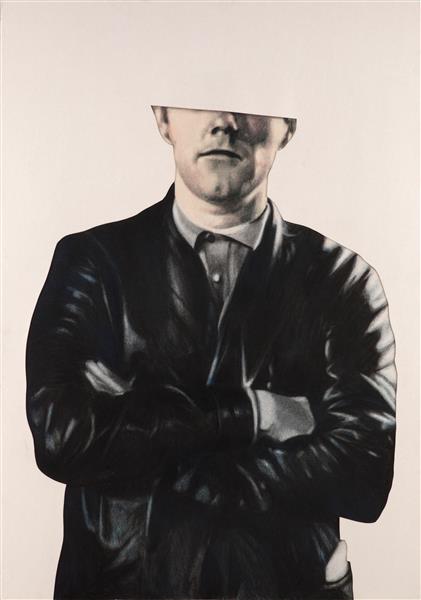AND NOW TO BEGIN AS IF TO BEGIN
Simon Dybbroe Møller
4 C-prints, frame, wood, metal, glass, wire
42.4 × 52.5 × 8.5 cm
2010
Acquisition 2010
Inv. No. 0205abcd
Simon Dybbroe Møller frequently works with objects he seems to have come across by accident and which he incorporates into various contexts. This may result in installations and further objects, but also – along the classical lines of Conceptual Art – in open spaces of thought.
For the series And Now To Begin As If To Begin (2010), the artist employed a variety of utensils, which he photographed during diverse stages of their utilization. The photographs, differing in size and enclosed by different frames, are stacked upon one another and held together by a thin metal wire. It is only on the uppermost photograph that the object is recognizable more or less as a whole. This method was inspired by an observation the artist made on a cemetery in the Mexican countryside in March 2010. On same graves, he saw different types of crosses tied up with metal wire; only the one at the very front was firmly attached to the grave or rooted in the ground.
The selected objects’ purpose is irrelevant; the only thing that matters is that their English name rhymes with “begin”. Each work of the series describes an object, such as a tin, a rubbish bin, or a mandolin. For his work in the evn collection, Møller used busts of male mannequins. They are shown in four photographs, yet without their being completely exposed to the beholder. Although the last – or first – picture does reveal the object, it lacks the head of all things. Basically, the object is there, yet can never be grasped in its entirety. One can also recognize a complex arrangement, which, technically speaking, is an assemblage; yet it is also an assemblage in a philosophical sense, as was described by Deleuze/Guattari, consisting of thematic and expressive segments on one axis and territorial and reterritorialized parts on the other: “On the one hand it is a machinic assemblage of bodies, of actions and passions, an intermingling of bodies reacting to one another; on the other hand it is a collective assemblage of enunciation, of acts and statements, of incorporeal transformations attributed to bodies.”1
Heike Maier-Rieper, 2011 (translation: Wolfgang Astelbauer)
1) Gilles Deleuze/Félix Guattari, A Thousand Plateaus. Capitalism and Schizophrenia, Continuum, London and New York 2004, 97–98.
Continue reading
Publications
evn collection. 2006–2011, Cologne 2011, p. 116 f



